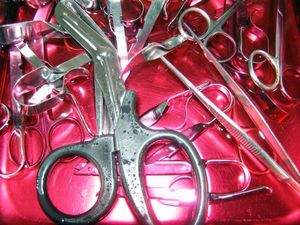Moyamoya disease is a rare circulatory and neurological disease with an unknown cause. According to eMedicine Neurology, moyamoya disease is characterized by thickening in the walls of the terminal portions of the internal carotid vessels. The anterior, middle, and posterior cerebral arteries that branch off the circle of Willis are also occluded (Sucholeiki). This causes nutrients and oxygen to not be able to reach certain parts of the brain. This will cause many problems for patients, including stroke, neurological deficiencies, hemorrhaging, and even death.
What are the signs and symptoms of moyamoya disease?
Children
Transient ischemic attack is the most common symptom in children. Children may also have learning difficulties, speech difficulties, and mental retardation. Neurological problems seen in children are headaches, seizures, involuntary movements, and episodes of paralysis in any part of the body. Hemorrhage and anemia are also seen in children (Ali’s Rally Foundation).
Adults
Hemorrhaging is seen in adults, particularly intracranial hemorrhaging and subarachnoid hemorrhaging. Strokes may also occur. Neurological deficiencies and symptoms, such as fainting episodes and disturbances in consciousness, are commonly seen. Visual problems, such as loss of eyesight in one eye, blurry vision, and extremely poor vision may occur (Ali’s Rally Foundation).
Who gets moyamoya disease?
Moyamoya disease is mostly discovered at five years of age and the fourth decade of life. The disease is most commonly seen in Asians and is also seen in whites, blacks, Hispanics, and Haitians (Sucholeiki). The female to male ratio is 1.8:1 (Sucholeiki). In a study of children with moyamoya disease, nine children were of Asian descent, twelve children had neurofibromatosis (congenital condition which tumors grow on nerves), nine children had Down syndrome, and ten children presented after cranial x-ray and chemotherapy (Ali’s Rally Foundation). Heredity may play a role in moyamoya disease in 10% of cases. Moyamoya disease is an autosomal dominant trait, and its expression is dependent on age and genomic imprinting factors (Sucholeiki). Moyamoya disease is seen many times in healthy patients with no predisposing factors (Sucholeiki).
What is the mortality rate of moyamoya disease?
Approximately 10% of adults and 4.3% of children will die from moyamoya disease. The most common cause of death is hemorrhage (Sucholeiki).
What are the tests for moyamoya disease?
If moyamoya disease is suspected on a CT scan or MRI, an angiogram is ordered. A positive angiogram is the main indicator of moyamoya disease. SPECT is also used to show the areas of the brain with decreased blood and oxygen supply (Ali’s Rally Foundation).
What is the treatment for moyamoya disease?
Surgery and medication are used for the treatment of moyamoya disease. The medicines used to treat moyamoya disease are aspirin and Verapamil. Aspirin prevents micro-clot formation, and Verapamil is used to treat headaches. Surgery is required in the treatment of moyamoya disease. The two types of surgery are the EDAS (encephaloduroarteriosynangiosis) procedure and the EMS (encephalomyosynangiosis) operation. Burr holes, multiple small holes placed in the skull, allow for new vessel growth from the scalp to the brain (Ali’s Rally Foundation).
What is the prognosis for moyamoya disease?
The prognosis for children is better than adults. It usually talkes six to twelve months before new blood vessels to grow after surgery to the needed locations. (Ali’s Rally Foundation).
Resources
Ali’s Rally Foundation | Www.ALISRALLY.org. Web. 11 May 2010. .
Sucholeiki, Roy, and Jasvinder Chawla. “Moyamoya Disease: [Print] – EMedicine Neurology.” EMedicine – Medical Reference. Web. 11 May 2010. .


